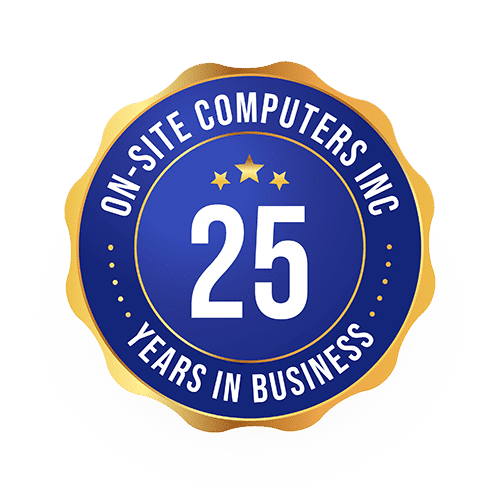Information Technology Planning: Maximizing Potential in 2023
Key Points
- Information Technology planning is important to ensure your organization has the best possible strategy for success in 2023.
- IT planning involves evaluating an organization’s existing IT infrastructure and capabilities, identifying areas for improvement, and making decisions that will enable the organization to meet its strategic goals.
- It’s important to map out a clear timeline, assign roles and responsibilities, and set realistic goals to define your organizational and technological vision.
We are two months into 2023, and the past few years have taught us the importance of being prepared for the unexpected. Technology and digital transformation can be both a source of stability and innovation in times of rapid change. Now is a crucial time to reflect on technology’s role in supporting and driving your business goals and objectives. In such a technology-driven world, it is more important than ever for organizations of all sizes to engage in strategic Information Technology (IT) planning to ensure that all technology assets are aligned with their goals and effectively leveraged to create value and support growth.

What Is Information Technology Planning?
Information Technology planning involves evaluating an organization’s existing IT infrastructure and capabilities, identifying areas for improvement, and making decisions that will enable the organization to meet its strategic goals. Through careful IT planning, organizations can ensure that they are leveraging the latest technology to reduce costs, increase efficiency, and drive innovation. By implementing an effective IT strategy for the year ahead, organizations can remain competitive and have the tools to achieve their objectives.
Working together as a team is essential when it comes to IT planning. It’s an opportunity for all stakeholders – from technology teams and business leaders to employees – to make their mark on the organization by creating clear objectives that allow everyone to contribute. As part of the planning process, it’s important to map out a clear timeline, assign roles and responsibilities, and set realistic goals. By defining your organization’s technological vision, you can build synergy between departments and optimize investments so they generate maximum value for the organization.
Key Trends and Areas of Focus for 2023
Organizations must embrace technology’s untiring momentum to remain competitive and agile. In 2023, many organizations will be looking to accelerate digital transformation initiatives, such as cloud migration and automation, and to integrate existing IT systems better. Keeping track of the latest trends ensures that your organization will make well-informed decisions about investing in technology, resulting in an innovative infrastructure perfectly aligned with your goals – otherwise, you’ll be left behind by those who are more prepared.
Some of the top trends in IT planning for 2023 include:
- AI and Machine Learning: Integrating AI and machine learning into business processes will continue to be a major area of focus for organizations. These technologies will improve efficiency, automate tasks, and drive innovation.
- Cloud Computing: The continued growth and adoption of cloud computing will continue to be a key trend in 2023. Organizations will ensure their cloud infrastructure is secure and their data is protected.
- Internet of Things (IoT): IoT devices and technologies will continue to become more integrated into organizations, and organizations will leverage IoT to improve operations and enhance customer experiences.
- Cybersecurity: Cybersecurity will remain a top priority for organizations, focusing on protecting against evolving cyber threats and ensuring the security of sensitive data.
- Data Management and Analytics: Effective data management and advanced analytics will also be critical in 2023. Organizations will focus more on using data to inform business decisions and drive growth.
- Remote Work and Collaboration: The remote work trend will continue, and many organizations will focus more on ensuring that their remote teams can collaborate effectively and securely.
By keeping an eye on the latest advancements in technology and staying ahead of trends, organizations can be in a better position to create a comprehensive IT plan for 2023 that allows them to capitalize on new opportunities and remain competitive.
Developing an Information Technology Plan That Works
Developing an effective strategic IT plan is one of the most important steps in ensuring the success of any organization. A properly constructed IT plan should align with the overall corporate strategy, be flexible enough to accommodate changes in the industry, and provide a roadmap for achieving long-term goals. As the world of technology is ever-evolving, organizations need to develop an up-to-date IT plan and ready for future challenges.
Here are some key components to consider when developing a strategic IT plan:
- Assessment of Current Technology Assets: This involves evaluating the current state of technology within the organization and identifying areas for improvement. This can include assessing existing systems, network infrastructure, and data management processes.
- Alignment With Business Goals: The IT plan should be aligned with the overall goals and objectives of the organization. This includes considering how technology can support business operations, drive efficiencies, and create value.
- Budgeting and Resource Allocation: The IT plan should include a technology investment budget and a clear resource allocation plan. This can include decisions about hardware and software upgrades, hiring new employees, and investing in new technologies.
- Risk Management: Technology investments come with some risks. The IT plan should include a risk management strategy to mitigate these risks and ensure that technology investments are secure and protected.
- Key Stakeholders: Planning IT resources alone is not enough; it is important to involve key stakeholders in the decision-making process. This includes engaging IT staff, senior leadership, and end users.
- Future Planning: The IT plan should also consider future technology trends and developments and how they can be leveraged. This includes considering the potential impact of emerging technologies and identifying opportunities for growth and innovation.
- Timelines: The IT plan should include a timeline for implementation and regular review. This ensures that the organization is on track to meet its overall objectives and allows for adjustments to be made promptly.
- Outside Expertise: Working with experienced IT consultants can help you create an IT plan tailored to your organization’s specific needs. A vCIO (virtual Chief Information Officer) can be a great resource if you’re looking for additional guidance by providing executive-level direction and advice.
Regular engagement in strategic IT planning is critical to ensure that technology remains a supportive driving force for your organization. Organizations that follow these key components will be better prepared to take on the unexpected.
Wrapping Up
The future of technology is unpredictable, but with the right plan in place, your organization can remain ahead of the competition and satisfy your customers or clients. By forming your IT planning strategy, your leaders will be ready to act swiftly when opportunities arise. It is important to regularly update your strategy to ensure that you remain competitive and ready to face the future. With a forward-thinking plan, your organization can remain ahead of the competition and keep your operations running smoothly.
Thanks to our colleagues at Tektonic in Vaughan, Canada, for their help.






